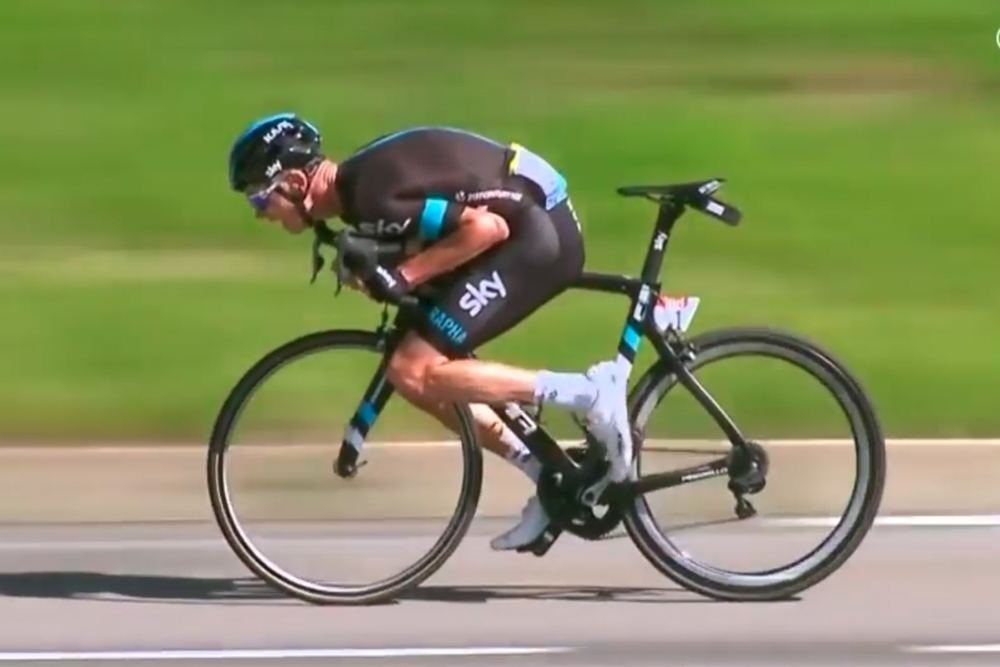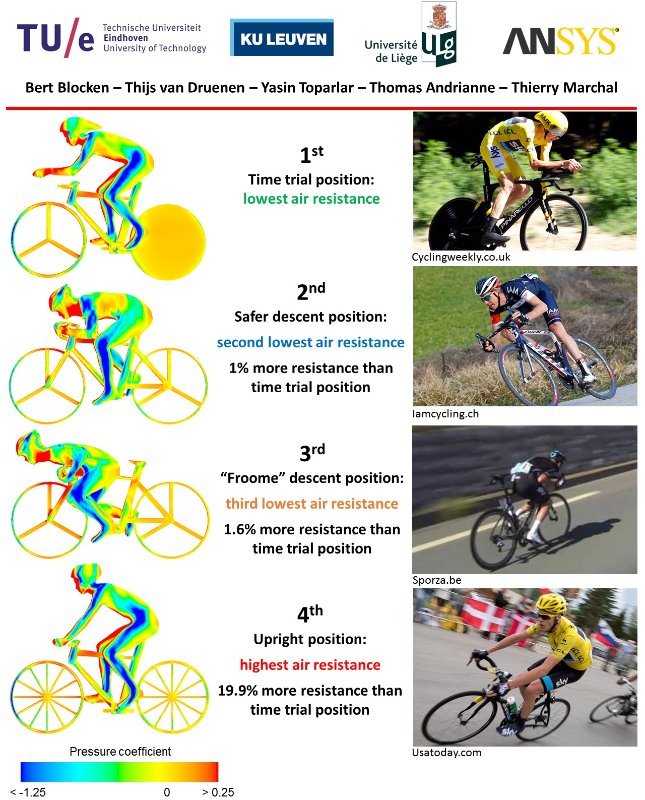Why Chris Froome's unusual descending style isn't as fast as it looks
Dutch and Belgian academics think Chris Froome could have gone faster

A small gain from an unusual descending technique helped Chris Froome win stage 8 of the 2016 Tour de France
If it hadn't been for the sight of Chris Froome running up Mont Ventoux, the most unexpected moment of the this year's Tour de France might have been Froome attacking on the descent of the Col de Peyresourde, pedalling with his bum on the top tube and his chest pressed against the top of the bars.
The logic behind this descending seems simple: you get the aerodynamic benefit of sitting low on the top tube, but are also able to pedal for a little extra speed. However, academics in Belgium and the Netherlands have put their serious work to one side for a week to show how this position might not be as fast as it looks.
>>> How to be more aero on your road bike (video)
In an article posted on Linkedin, Bert Blocken of the Eindhoven University of Technology in the Netherlands shows how he and other academics at KU Leuven, the University of Liège in Belgium, and ANSYS International used Computation Fluid Dynamics to compare four different riding positions: a time trial position, seated on the top tube (like Froome), seated in the saddle with your chest close to the bars, and a normal cycling position sitting upright with your hands on the hoods.

Unsurprisingly the time trial position was the fastest and the normal cycling position was the slowest, generating 19.9 per cent more air resistance than the time trial position. However, descending in the saddle was only 1 per cent less aerodynamic than the time trial position, while the Froome descending style was 1.6 per cent less aerodynamic. Not a big difference then, but we're sure with their marginal gains philosophy Team Sky will be paying attention.
>>> Six-year-old rider descends like Chris Froome after watching his Tour de France hero (video)
However despite apparently not being in the optimum aerodynamic position, Froome did of course manage to take 13 seconds on his rivals. According to Blocken this was due to a number of factors, such as the gap he had opened up over the top of the Peyresourde, the hesitation of the chasing group before the finish, and the fact that Froome's rivals may have been descending in an even less aerodynamic position.
The latest race content, interviews, features, reviews and expert buying guides, direct to your inbox!
Henry Robertshaw began his time at Cycling Weekly working with the tech team, writing reviews, buying guides and appearing in videos advising on how to dress for the seasons. He later moved over to the news team, where his work focused on the professional peloton as well as legislation and provision for cycling. He's since moved his career in a new direction, with a role at the Department for Environment, Food and Rural Affairs.